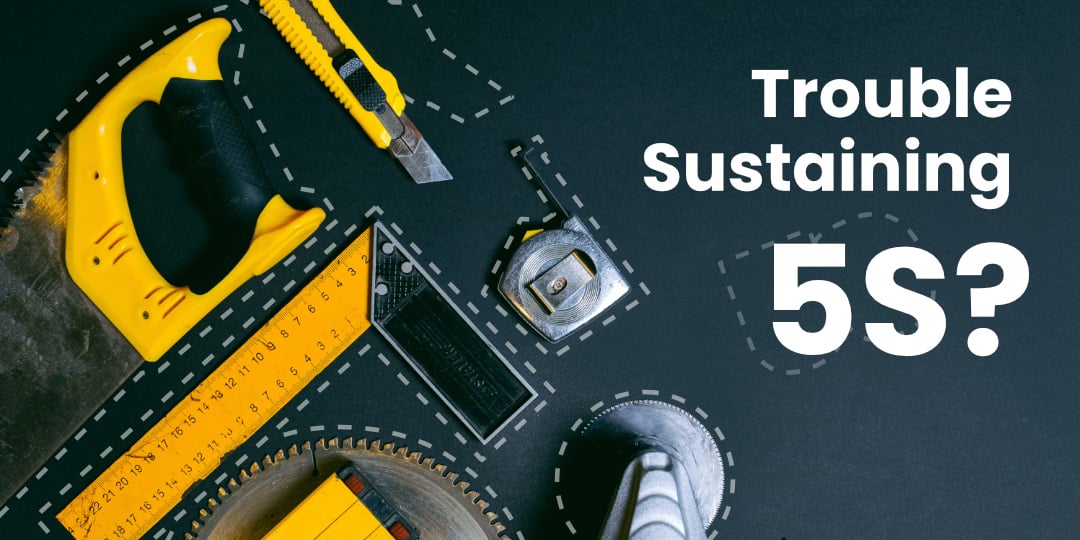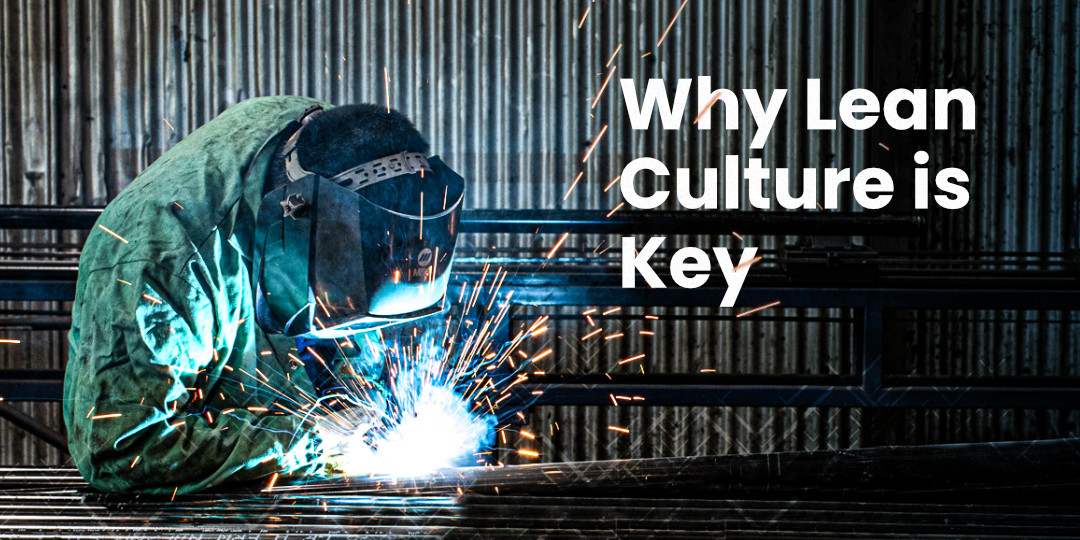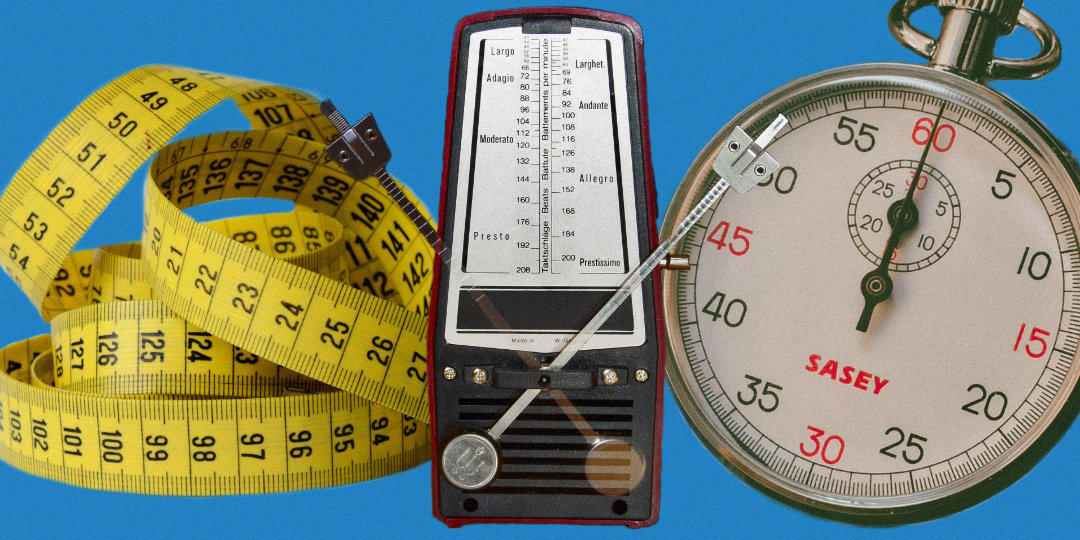Want a real challenge? I challenge you to find a factory with more than 20 people that doesn’t at least try to apply 5S.
Given that 5S is the best-known Lean tool by a wide margin, it’s kind of surprising that so many organizations that have tried to implement it also admit that they’re having a really hard time sustaining it.
I will argue that is because most of us actually don’t know what 5S is about.
At Veryable, we urge companies to adopt Lean practices and provide them with access to an on-demand labor marketplace so they can achieve operational excellence. In my own work, I’ve seen companies succeed with Lean and I’ve seen even more companies fail at it. That’s why I want to warn you of the common mistakes of others.
In this article, you’ll learn why most businesses can’t sustain 5S and what you can do to be certain your 5S event is repeatable and sustainable.
The first 5S event (what most companies get right)
First, let’s talk about the basics—what we’ve all been told about 5S. This is the part most companies understand as a list of the steps taken in a single 5S event.
I’m not going to bore you with the five Japanese words that the 5S process steps were originally called, but I believe shoehorning translations to start with the letter S was not a very good decision because it makes the meaning of the five steps harder to understand.
The traditional 5 S’s correspond to five stages of a process of organizing the workplace. They are:
- Sort (sometimes called Separate)
- Set in order (sometimes called Straighten)
- Shine (sometimes called Sweep)
- Standardize
- Sustain (sometimes called Self-discipline)
The Sustain phase is just what it sounds like. To ensure that the team complies with the 5S standards, many organizations carry out regular 5S audits and post the results of each audit. Some even make the audit scores a KPI!
And yet, as you’re probably aware, that does not guarantee success. In fact, many places will long carry the sad remnants of past 5S efforts: faded out motivational posters, torn floor markings, half-empty shadow boards, and old audit graphs. Perhaps the previous effort left the place marginally better than it was before, but it’s clearly not maintained and will continue to degrade until a new 5S project is launched.
Two reasons most companies fail to sustain 5S
There are two problems with how most companies do 5S that cause them to fail on the “Sustain” step of the process. The first is that they think the sole purpose of 5S is to tidy up and get organized. The second is that they try to keep ownership of 5S with the leadership instead of the workers.
First: 5S is about more than organizing and cleaning
The first thing most companies get wrong is when they think the whole purpose of 5S is to have a clean, well-organized work area. That is the superficial goal of 5S, and it certainly is worth the effort. A well-organized work area is a more pleasant, cleaner and safer environment. It has higher productivity due to the reduction in motion waste. It even produces work with greater quality, because clutter is a contributor to errors that end up causing defects.
But there is a deeper goal to 5S, and it’s why all good Lean programs start with 5S. That deeper goal is the creation of an empowered mindset among the workers. The table below explains how the worker’s mindset differs before and after a successful 5S event.
|
Before 5S |
After 5S (done right) |
|
Operators have no say about the organization of their work area. |
Operators have decided by and for themselves how to organize their own work area. |
|
Operators have never been asked to make decisions…often they’ve been reprimanded for making decisions. |
Operators see that only they get to make the decisions in the 5S workshop, and managers who were in the workshop didn’t interfere. |
|
Operators may have complained about the placement of a tool or not having enough tools, but nothing happened. It’s as though their voices are never heard. |
Operators are listened to, and their ideas and needs are attended to. If they need a new tool or safety mat, they get it! |
|
Operators are rarely given opportunities to act as a team. Sometimes, the system incentivizes them to be individualistic rather than cooperative. |
Operators work as a team. They have to listen to each other and resolve disagreements to move through the phases of the workshop. |
Do you see the difference? For too many, a good 5S is the first time they’re treated as thinking, knowledgeable, and worthwhile people. A good 5S event will involve treating them as a full person, with not just a pair of hands but a brain as well. It’s also for many the first time they see managers acting as coaches, not problem-solvers, answer-givers, instruction-distributors, or blamers.
The change in approach is absolutely critical, and it’s much more difficult on the managers and facilitators than on the operators themselves.
Second: 5S is not a top-down, one-time event
If managers and supervisors try to take control and ownership of 5S, it will fail. When conducting 5S there is one simple rule that makes all the difference:
The only people allowed to make decisions in a 5S workshop are the people who actually work in the area.
If your leadership can’t commit to this rule, you are simply not ready for Lean. Will it be frustrating to stick to this rule? You bet! Your frustration is a sign that you have not yet adopted the Lean mindset.
In my experience, when managers thought the team was making a wrong decision (e.g., keeping an object that the manager felt was unnecessary), it often turned out it was the right decision. But even it was the wrong decision — so what? Do you think the team won’t eventually figure it out? Don’t you ever make bad decisions?
It’s more important to teach the team that you trust them to own their work area than it is to nitpick about whether an object belongs. Remember this: the moment a manager speaks out against a team’s decision, even if they do so in a “respectful” way, they’ve sent one message loud and clear: “I’m still the decision-maker, no matter what I or others say.”
People on the shop floor are extra-sensitive to this message, even if it wasn’t the intent, because that is the reality they’ve lived with their whole lives. Lean is about changing this reality, and it’s a hard goal. But it’s the goal you need to achieve to be successful, and 5S is your first true test. Don’t flunk it.
How to make 5S sustainable
As you can see, this is very much about psychology, so I’d like to end with another tip. 5S is hard because you’re fighting against established work habits. To succeed, you will need to replace these old habits with new ones. Luckily, the mechanisms of habit formation are well-known (a good book on the subject is Atomic Habits by James Clear).
A habit is basically a neural loop that connects a cue (a trigger) to a response (the behavior displayed in a habit) and the response to a reward. When building a new habit, it’s critical to have all three elements. It’s not enough to reward people for doing the right thing—you must make it easy for the brain by having a consistent and unique cue that is associated with both the response and the reward. The reward can be “a small thing” (e.g. a nod or word of thanks) and might even dissipate with time, but the cue won’t.
In fact, when you’ve repeated the sequence enough times, you can remove the reward altogether and the cue will still produce the response.
Your goal when doing 5S should be to build the standard from phase 4 into habits (perhaps leveraging the science discussed above). Only when the 5S behaviors occur effortlessly will you be certain of sustainability. As long as it requires deliberate effort, 5S is fundamentally not sustained.
To do this, everybody in the 5S area needs to operate as a team and hold each other accountable. Not to keep score, but because it’s the repeated nudges we receive when we forget or when we do it right that will eventually create those good habits.
So, if it were possible to do so, I’d like to rename the 5S’s and clarify their meaning. They’d be called:
- Separate the necessary from the unnecessary
- Organize the necessary objects so as to minimize physical and mental efforts
- Clean to make the things that need fixing immediately apparent
- Standardize the activities to maintain cleanliness
- Create habits to be sustainable
Or, if you find it easier, memorize it as the acronym HABIT:
- Hunt for unnecessary objects
- Arrange remaining objects for minimum effort
- Bring issues to the surface through cleanliness
- Include cleaning standards into the daily work
- Team holds each other accountable until it becomes a habit
I hope this blog has renewed your interest in 5S and that you learned something new. I really encourage you to try this out, even if on a small scale to begin with, and hope to hear from you.
How can Veryable help support 5S thinking?
5S is about making waste visible, simplifying decision making, and empowering operations to take action – this is exactly what Veryable is enabling. Labor is a critical component of every operation, and it touches every aspect of your operation. Veryable has two platforms that can help transform how you utilize your full time employees, and how you can tap into thousands of rated and experienced Operators to scale your labor up and down with demand. These tools give you a Just In Time workforce that will make your operation better, faster, and more cost competitive.
Here is a brief overview of the platforms…
Veryable's On-Demand Labor Marketplace
Labor will directly or indirectly touch every aspect of your operational performance. It is also one of the largest expenses on your P&L. Ignoring opportunity or being comfortable doing things the way they've always been done makes it just that much harder to find net improvement elsewhere. Leveraging Veryable’s On-Demand Labor Marketplace to build a flexible extension of your full-time workforce will allow your team to precisely match labor capacity to demand on a daily basis. Adopting this approach gives your operations leaders the resources they need to deliver the maximum return for the business and the most value for the customer.
Veryable's Workforce Management Tool
Veryable’s Workforce Management Tool ties together multiple systems (ERP, WMS, MES, HRIS, etc.) to use real-time data to automate the labor planning process and guide your leadership in making better critical decisions. This eliminates guessing, protects against costly forecasting inaccuracies, and enables performance-based decision making without the burden of manual spreadsheet updates or back-of-the-napkin estimating. This tool can operate as a stand alone platform for your full time employees, or you can access Veryable's on-demand marketplace from within this tool
to fill any gaps in your operation on short notice. The best part is, you'll be able to view real-time performance data in just clicks for both full time employees as well as Veryable Operators.
Together these systems truly optimize every labor dollar spent across your footprint. This enables better visibility to translate best practices, and can act as a roadmap for continuous improvement.
To learn more, visit our homepage for Continuous Improvement, Operational Excellence, and Lean Professionals.



-1.png)

